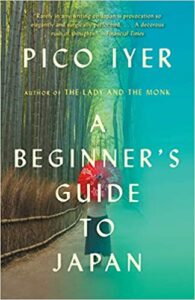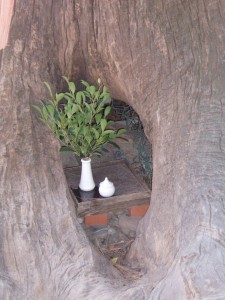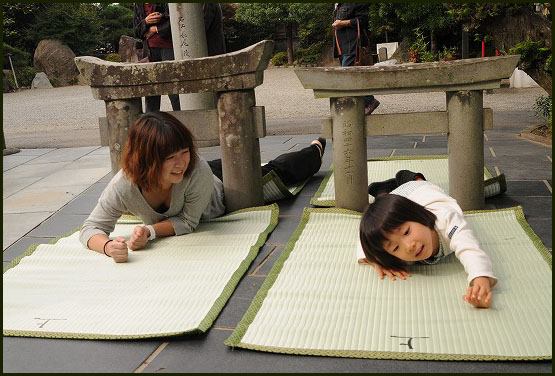
Pico Iyer is a writer with a worldwide following, who has lived in Japan for the past thirty years. He’s won awards and been hailed as ‘arguably the greatest living travel writer’. He’s noted in particular for his sensitivity in exploring cross-cultural themes and spiritual matters, two examples being Zen and the Dalai Lama.
Amongst his most recent books is A Beginner’s Guide to Japan, subtitled Observations and Provocations. The subtitle is more of a clue to the contents than the main title, for it’s not really a beginner’s guide so much as a collection of notes and reflections by a seasoned resident. (He lives for much of the year in Nara, and though married to a Japanese he remains on a tourist visa.)
The book has two pages on Japanese spirituality in a section entitled ‘Between the Torii Gates’ (though Through the Torii Gates would have better captured the sense of Wonderland). Much of what is said supports the notion of animist thinking as fundamental to the Japanese worldview, with observations that ‘People down the road to me pray to trees,’ and that ‘in the Shinto universe every last piece of dust and vegetable is believed to have a spirit.’

Just three pages before this, in true syncretic fashion, he observes that ‘A school of local thought holds that “mountains and rivers, grasses and flowers, can all become Buddhas.”‘
The absorption of Shinto values by Zen, explored previously by Green Shinto in a series of postings, is referenced too by Iyer in a couple of passages. ‘”Take care of things,” as the Zen teacher Shunryu Suzuki says, “and things will take care of you.”‘
‘When one of his Western students was having trouble cleaning toilets, Suzuki suggested talking to them as if they were friends, telling them how happy she was to get the chance to look after them. It worked.’
In a paragraph that reflects the raison d’etre of Green Shinto, he states that ‘It’s often noted how Japanese Buddhism has influenced the world, everywhere from the Zen reduction of sushi bars to the wabi-sabi aesthetic of white-on-white hotels. But the culture’s most striking cultural export these days is Shinto.’
Marie Kondo and the Oscar-winning films of Hayao Miyazaki are cited as examples. ‘Anime is the natural expression of an animist world,’ Iyer claims. This links in with the Japanese love of robots and mascots, contrasted with the tendency to minimise individualism in Japanese art.
‘When foreigners arrive in Japan, they sometimes remark – as I did, in 1985 – that the people around them look like robots. This may be less because the Japanese are so machinelike and dependable than because inanimate things in Japan possess so much spirit and life.’
Now there’s an observation and a provocation!


A great review. Must read. xx C
Thank you, Catriona… It’s a thought-provoking book. As is intended, in fact.